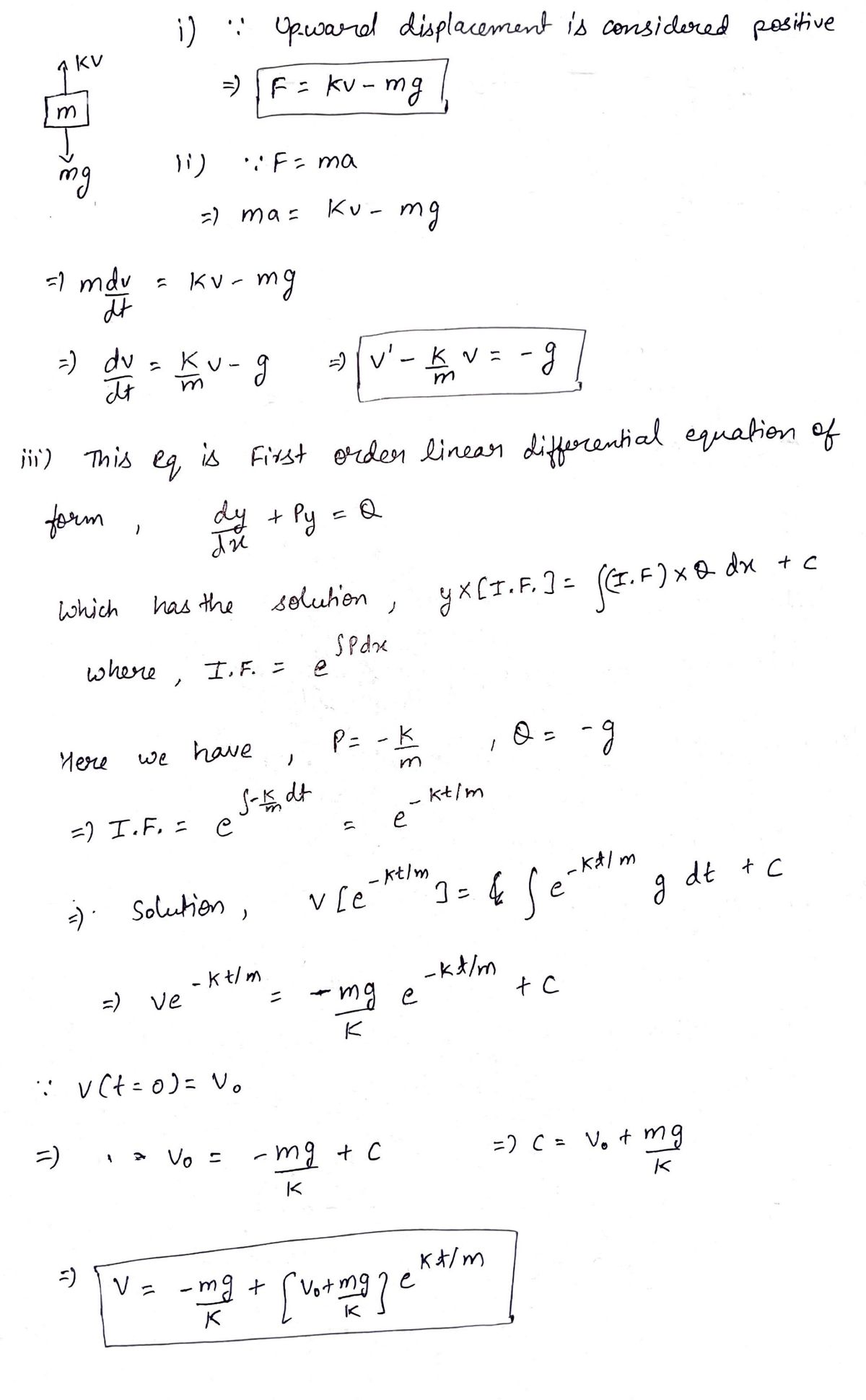You drop an object of mass m from a tall building. Suppose the only forces affecting its motion are gravity, and air resistance proportional to the object's speed with positive constant of proportionality k. Let g denote gravitational acceleration (a positive constant). Express the total force in terms of m, g, and the object's velocity v, where upward displacement is considered positive. F - Newton's second law tells us that force is equal to mass x acceleration, F = ma. Relating mg - kv acceleration to velocity, rewrite the equation for total force above as a first order differential equation for v as a function of t. Denote v' as dv dt dv dt this is not an equation. m v(t): = Solve this differential equation for v(t) with the initial condition v(0) = V0. mg k 1 e X m Find the terminal velocity. Terminal velocity = mg k X syntax error: X X
Gravitational force
In nature, every object is attracted by every other object. This phenomenon is called gravity. The force associated with gravity is called gravitational force. The gravitational force is the weakest force that exists in nature. The gravitational force is always attractive.
Acceleration Due to Gravity
In fundamental physics, gravity or gravitational force is the universal attractive force acting between all the matters that exist or exhibit. It is the weakest known force. Therefore no internal changes in an object occurs due to this force. On the other hand, it has control over the trajectories of bodies in the solar system and in the universe due to its vast scope and universal action. The free fall of objects on Earth and the motions of celestial bodies, according to Newton, are both determined by the same force. It was Newton who put forward that the moon is held by a strong attractive force exerted by the Earth which makes it revolve in a straight line. He was sure that this force is similar to the downward force which Earth exerts on all the objects on it.
![**Understanding Motion with Air Resistance**
When you drop an object of mass \( m \) from a tall building, the primary forces affecting its motion are gravity and air resistance. Air resistance is proportional to the object's speed with a positive constant of proportionality \( k \). Let \( g \) represent gravitational acceleration (a positive constant).
**Expressing Total Force**
To express the total force \( F \) in terms of \( m \), \( g \), and the object's velocity \( v \) (considering upward displacement as positive), the equation is:
\[
F = mg - kv
\]
**Newton’s Second Law**
According to Newton’s second law, force equals mass times acceleration, expressed as \( F = ma \). By relating acceleration to velocity, we can rewrite the total force equation as a first-order differential equation for \( v \) as a function of time \( t \). Denote acceleration \( v' \) as \( \frac{dv}{dt} \).
**Differential Equation**
To solve the differential equation,
\[
m \left(-\frac{dv}{dt}\right)
\]
results in a syntax error indicating that this is not an equation as presented.
**Solving for Velocity**
Given the initial condition \( v(0) = v_0 \), solving the differential equation gives:
\[
v(t) = \frac{mg}{k} \left(1 - e^{-\frac{k}{m}t}\right)
\]
**Finding Terminal Velocity**
The terminal velocity is determined when the object's speed stops changing:
\[
\text{Terminal velocity} = \frac{mg}{k}
\]
*Note: The boxes above indicate where certain expressions need correction.*](/v2/_next/image?url=https%3A%2F%2Fcontent.bartleby.com%2Fqna-images%2Fquestion%2Ff57c5c9b-acb3-4a3d-a39b-55eeff7ee4ad%2Fabf29cbb-a8ae-439f-86ca-2d69bc534699%2Fv4n4as_processed.jpeg&w=3840&q=75)

Step by step
Solved in 2 steps with 2 images









